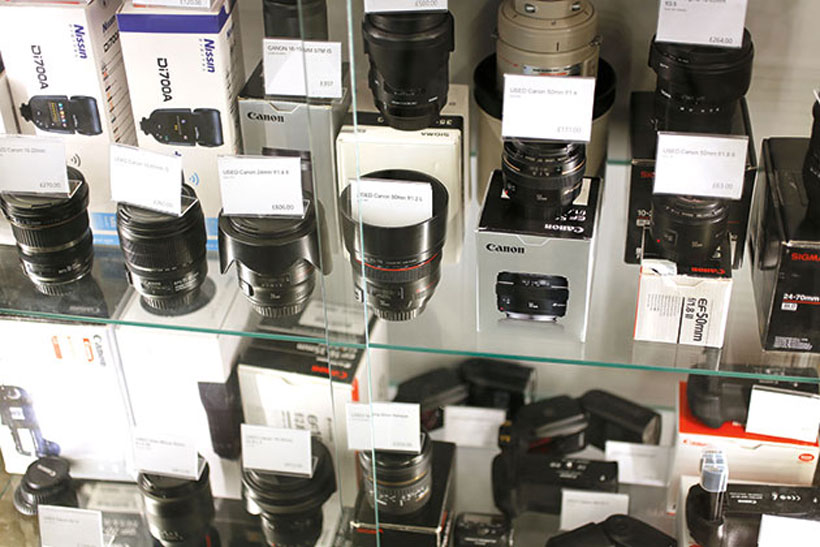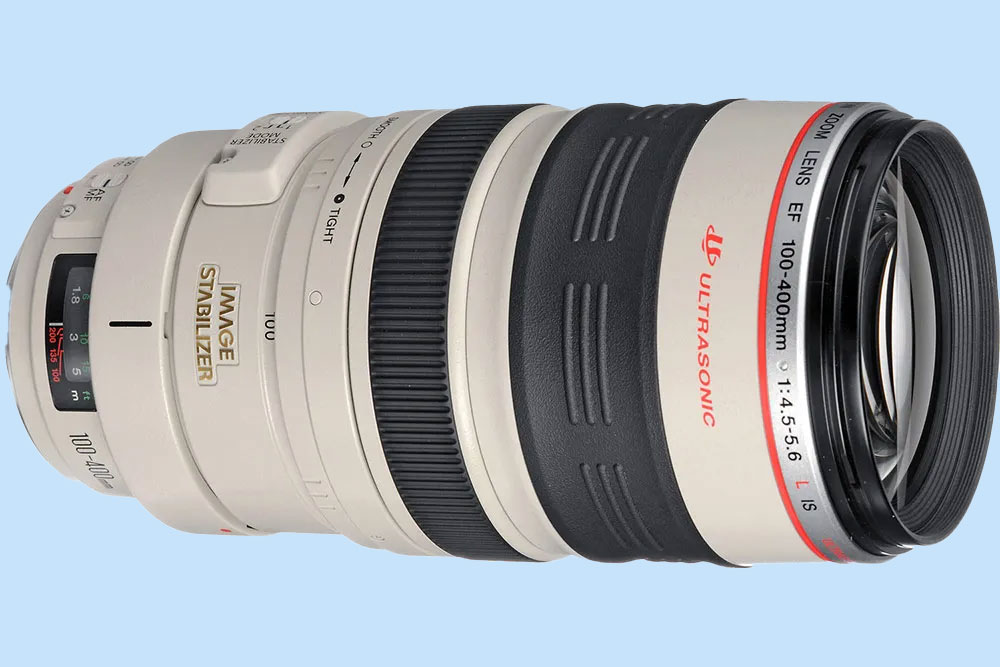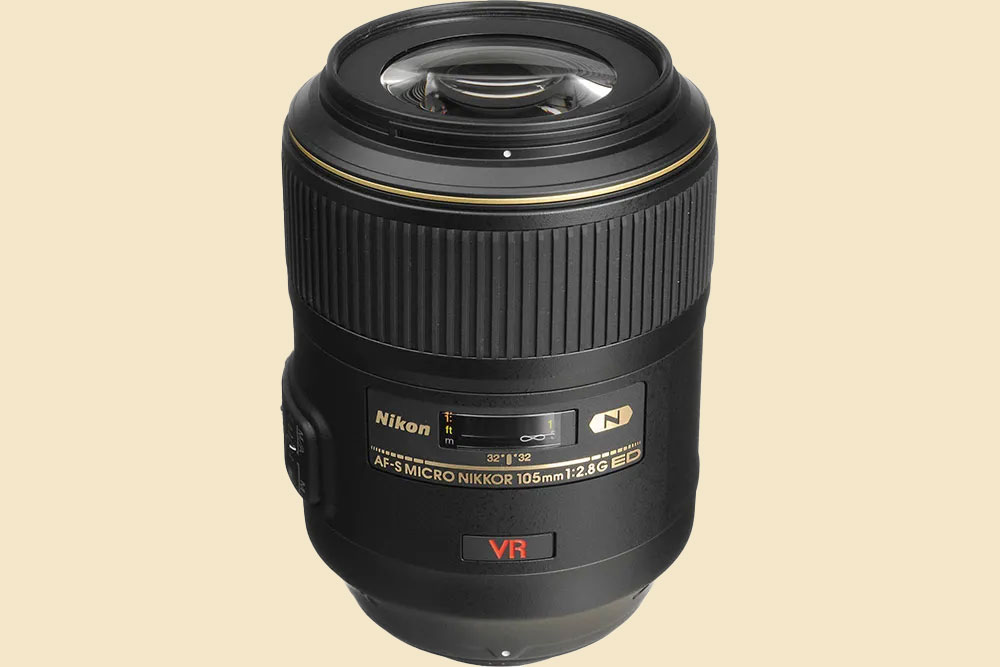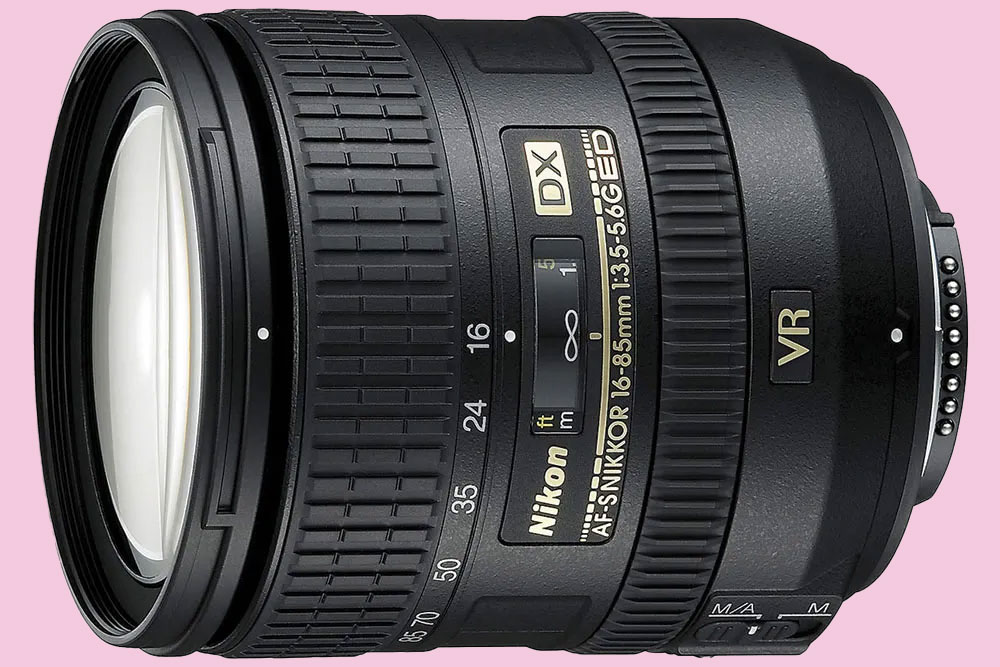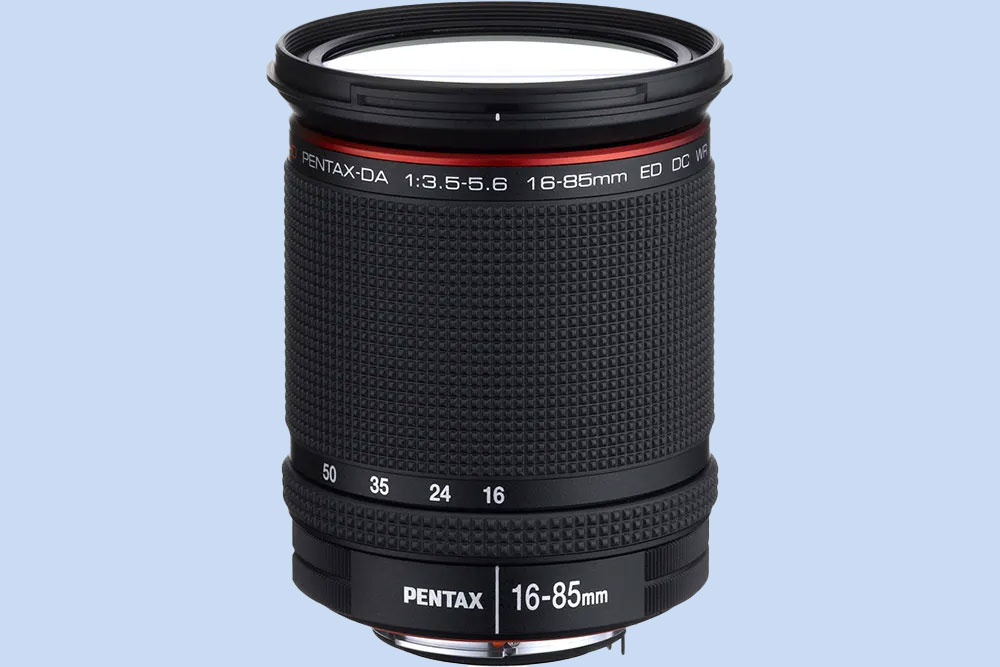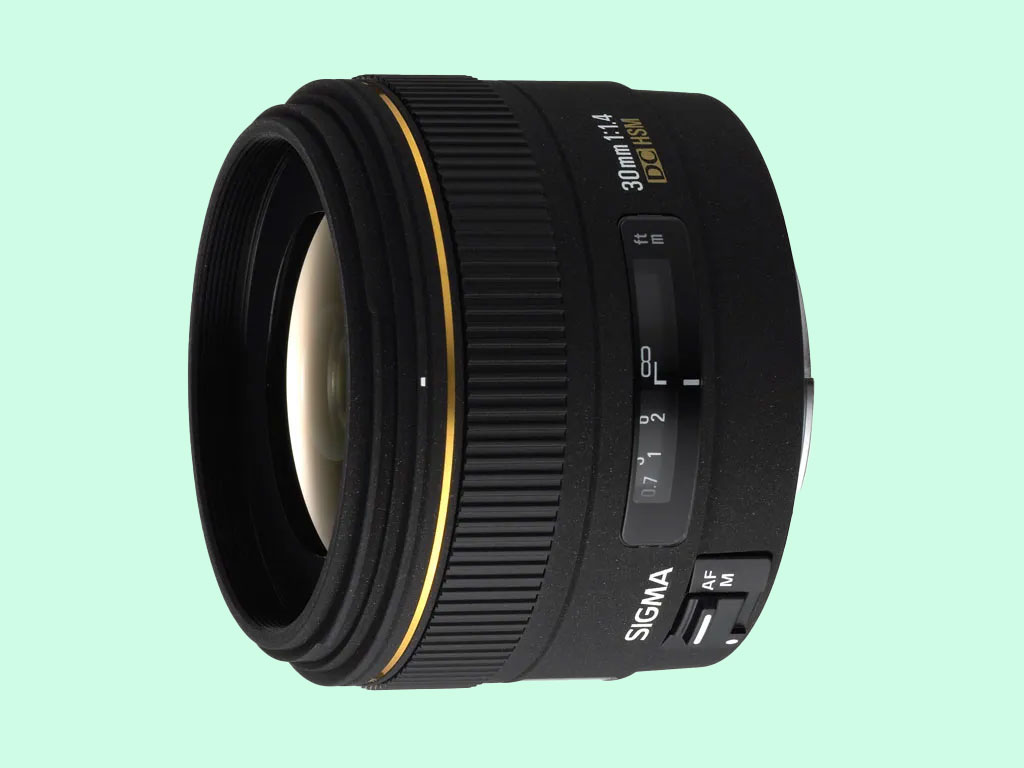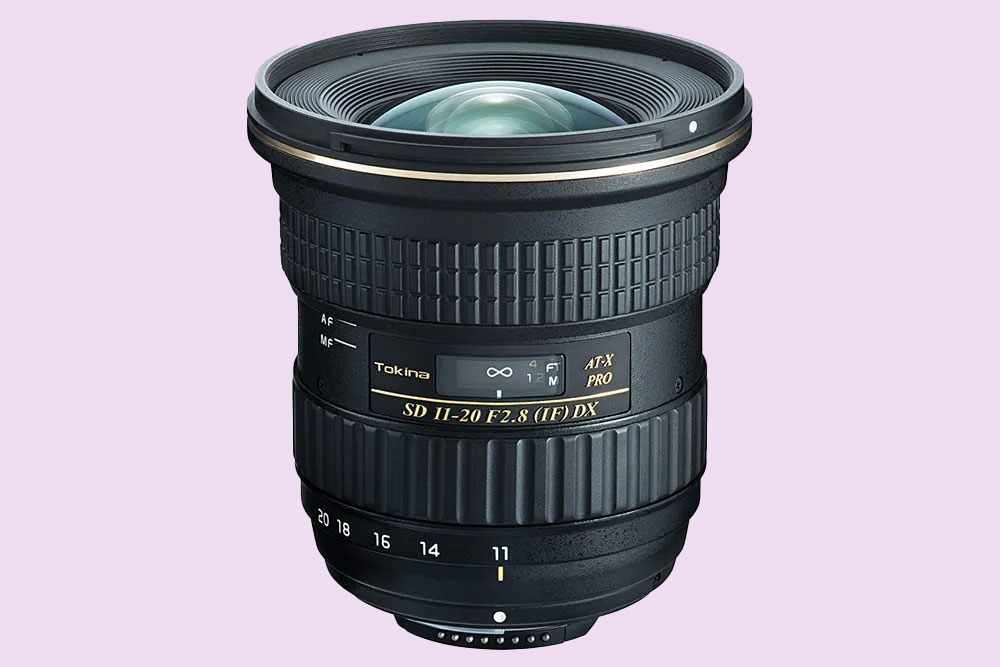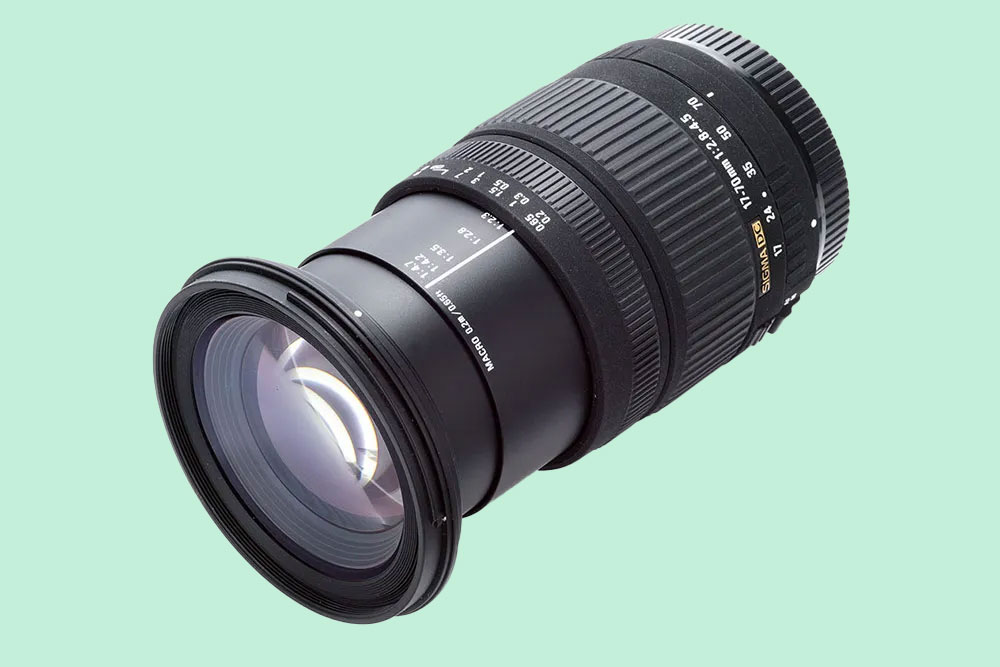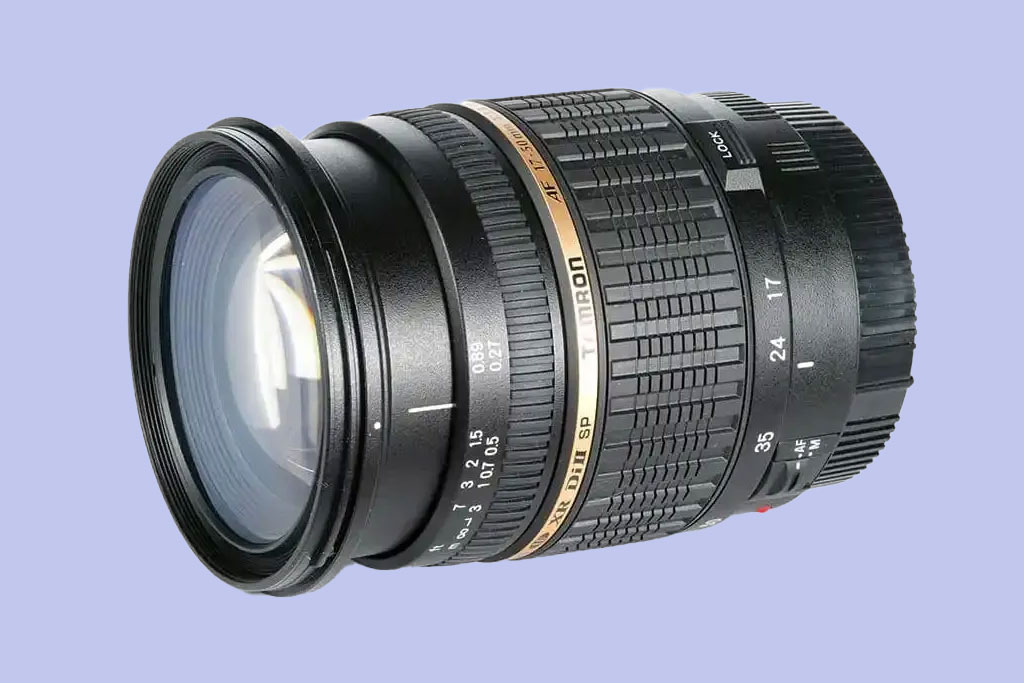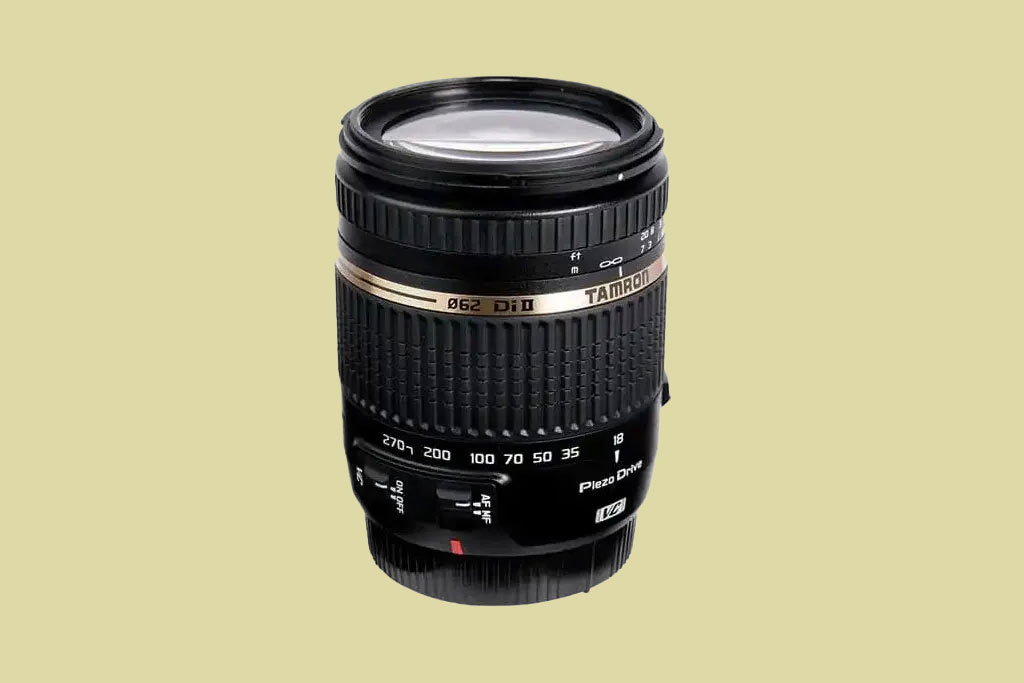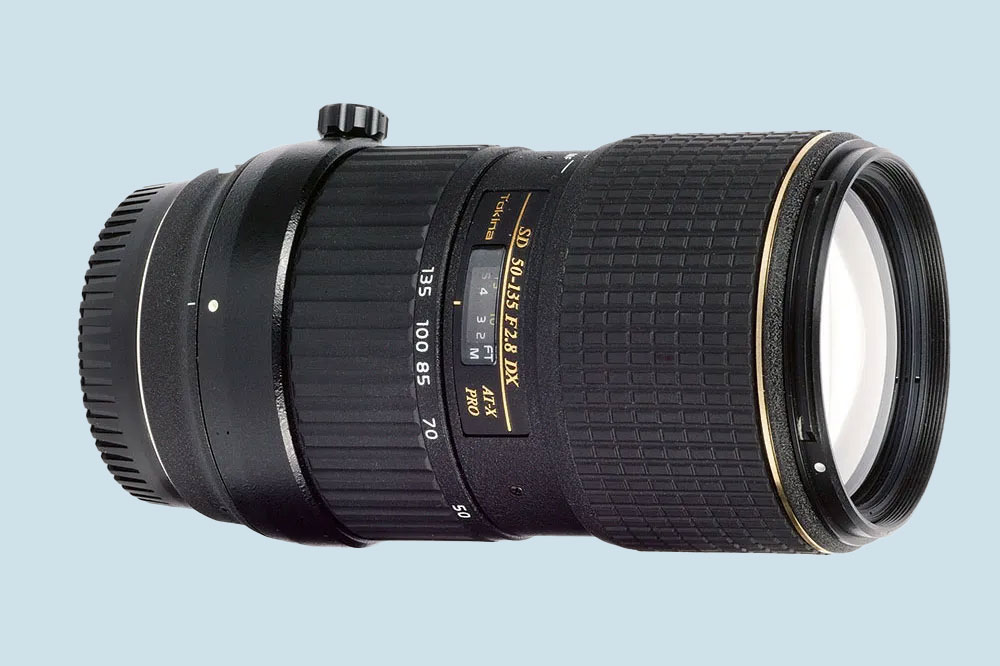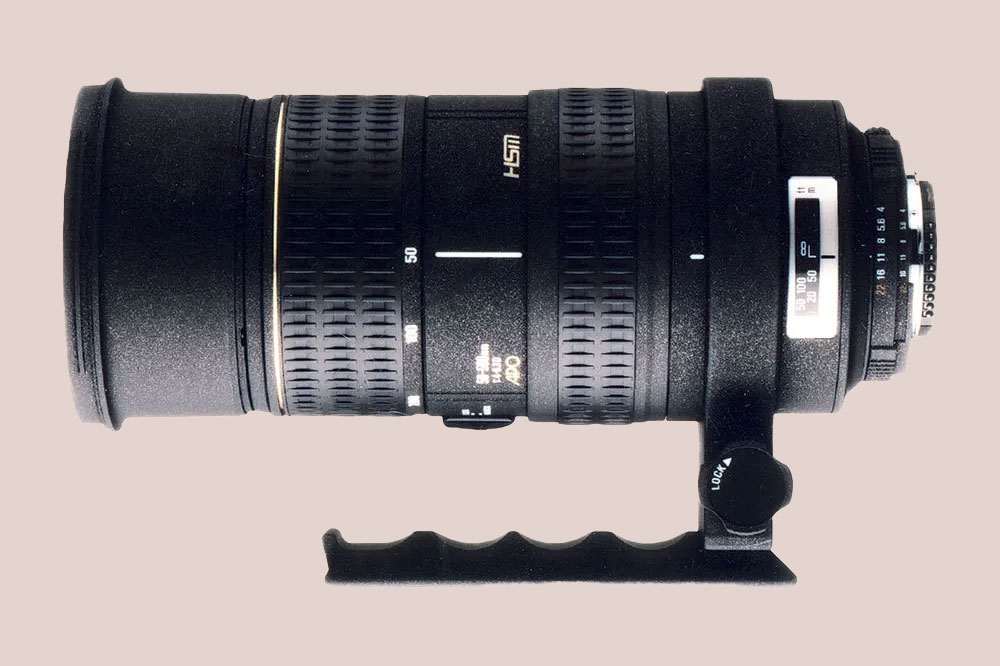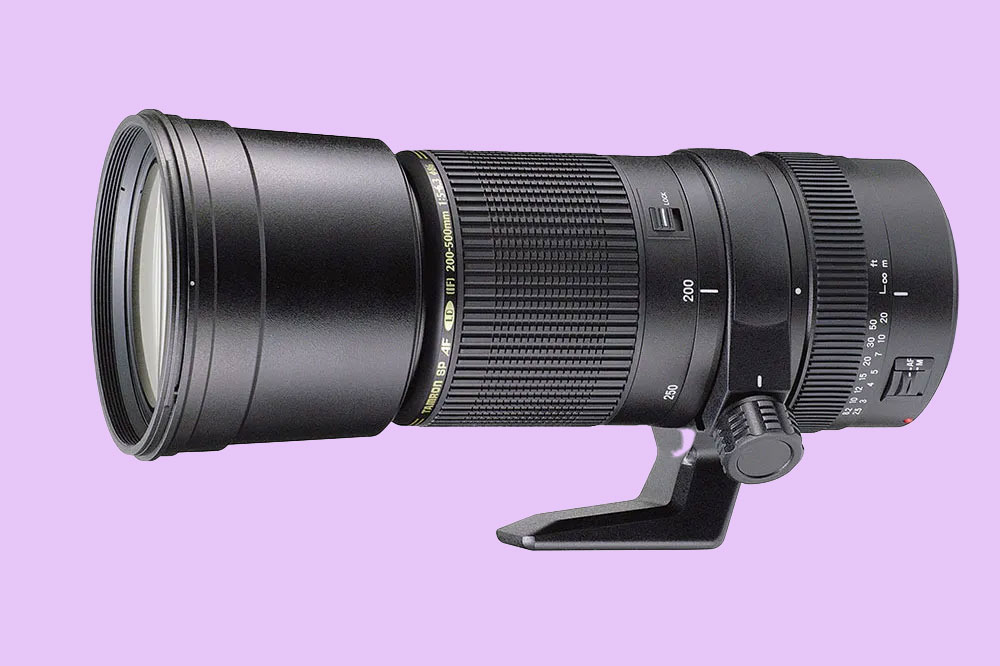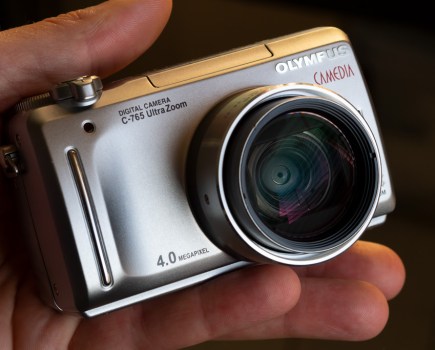Audley Jarvis and the AP team head to the used photo gear markets to hunt down the best second-hand DSLR lenses to buy.
The best second-hand DSLR lenses allow you to upgrade your camera system without spending a fortune, especially if you’ve already invested in one of the best DSLR’s. New DSLR lenses are rare these days, but their systems have been around for a long time, and there are decades’ worth of fantastic lenses on the second-hand market. Many can be picked up for a fraction of what you would have originally paid for them on release. It’s just a matter of finding the good ones.
We’ve done that work for you and collated our results in this comprehensive buying guide that includes a huge selection of lenses. We’ve got optics for all the major DSLR systems, including Canon, Nikon, Pentax and even Sony’s A-mount. We’ve included lenses for every photographic discipline, from landscape to street to wildlife and everything else. So you’ll find zooms, prime, wide-angles, telephotos, macros and more. Side note: if you already have your system picked out and want options for a specific mount, our guides to the best Canon EF lenses and the best Nikon F lenses may come in handy.
First, if you haven’t bought used photo gear before, it pays to do your research and have an idea where to look. So, let’s quickly take a look at where to find the best second-hand DSLR lenses, and run through some tips on how to pick them out…
How to buy the best second-hand DSLR lenses
Buying via a camera specialist is a great idea, as long as you stick with a reputable firm. Here is our recommended list of companies we would buy second-hand from:
- Wex Photo Video
- Clifton Cameras
- Camera World
- Park Cameras
- Grays of Westminster (Nikon only)
- Camera Jungle
- MPB
- London Camera Exchange
- Adorama (USA)
- B&H Photo Video (USA)
While these are not exhaustive lists, you should be cautious and research customer reviews for any business before giving them your money. Don’t assume a business is well-established or credible on the basis of a professional-looking website!
Buying used gear from a camera specialist means that it will have been checked over before being listed. This is some assurance that it’s in working order. They will also generally offer a warranty on their used products, normally around 3-6 months, though some may offer longer. You can usually extend this, albeit for a fee. Check what kind of warranty you’re getting before you buy.
Bear in mind that specialist retailers will list items in varying conditions. This goes for all second-hand shopping. At the highest prices, you should expect lenses in excellent or near-mint condition, but some will also be sold much cheaper because they are damaged or defective. Some may not work at all – it’s quite common for camera tinkerers and enthusiasts to buy non-working lenses and strip them for parts, but most aren’t looking for those. Check the condition of a lens before buying – if it’s listed at an incredibly cheap price, there’s probably a reason!
Buying privately
If you decide to buy privately, check over the lens in person before handing over any money. Minor cosmetic scratches and dings aren’t an issue, but serious dents to the front filter holder, excessive wear to the mount, or damage to the front or rear elements should all be cause for concern. Has the lens been fitted with a protective filter? Do the rings turn as they should? Are there any signs of fungus or haze inside? Bring a camera to take some test photos if possible. The seller may not be deliberately trying to rip you off – if the lens wasn’t originally theirs, they just may not have known how to store it correctly.
Buying online – via eBay and others
Looking for a second-hand DSLR lenses on eBay and similar sites carries risks, but is also a chance to nab a bargain. Take any precautionary steps you can think of – checking the seller’s ratings from previous buyers is a good start. Prepare a list of questions to ask, and scrutinise the photos provided. You can always ask for more, and a good seller should be happy to oblige. Steer clear of those that use generic product images rather than their own photos; this is a big red flag. Read the description to get an idea of the lens’ condition – most sellers are very open about defects. If the description of the lens is vague and doesn’t give a good sense of its condition, you should probably avoid that listing.
Check out our rundown of the best second-hand cameras and if you’re looking for a complete setup with camera and lens, we have a useful guide to the best second-hand camera setups for under £1,000/$1,000.
Looking for the best deals on used DSLR lenses? Not only will you find the best, but also some of the cheapest second-hand DSLR lenses, as our ‘Buy now’ buttons are set up to automatically take you to the best prices from trusted retailers. You’ll also find a list of other retailers below each lens, so you can find the right deal for you.
Best second hand DSLR lenses: our quick list
- Canon EF 85mm f/1.8 USM – Buy now
- Canon EF 24-105mm f/4L IS USM – Buy now
- Canon EF 100-400mm f/4.5-5.6L IS USM – Buy now
- Nikon Micro-Nikkor AF-S 105mm f/2.8G VR IF ED – Buy now
- Nikon Nikkor AF-S 16-85mm f/3.5-5.6G ED VR DX – Buy now
- Nikon Nikkor AF-S 80-400mm f/4.5-5.6G ED VR – Buy now
- Pentax HD PENTAX DA 16-85mm f/3.5-5.6 ED DC WR – Buy now
- Sigma 30mm f/1.4 EX DC HSM – Buy now
- Tokina SD 12-24mm f/4 (IF) DX AT-X Pro – Buy now
- Sigma 17-70mm f/2.8-4.5 DC Macro – Buy now
- Sigma 105mm f/2.8 EX DG Macro – Buy now
- Tamron SP AF 17-50mm f/2.8 XR Di II LD Aspherical (IF) – Buy now
- Tamron 18-270mm f/3.5-6.3 Di II VC PZD – Buy now
- Tokina AT-X Pro 50-135mm f/2.8 DX – Buy now
- Sigma APO 50-500mm f/4.5-6.3 EX DG OS HSM – Buy now
- Tamron 200-500mm f/4.5-6.3 SP AF Di (IF) – Buy now
- Tamron SP AF 90mm f/2.8 Di Macro – Buy now
Why you can trust Amateur Photographer
We spend many hours testing every product we recommend, in detail, in a variety of situations and shooting scenarios, and only use experts for our reviews, so you can be sure that you’re getting the best products. Find out more about our expert writers.
Our picks of the best second-hand DSLR lenses:
Canon EF 85mm f/1.8 USM
At a glance:
- Mounts Canon EF
- Minimum focus distance 85cm
- Weight 425g
- Filter thread 58mm
- Guide price $400-500 / £180-260
For quite some time, Canon offered two 85mm primes for EF mount: the professional-grade EF 85mm f/1.2L (£1,730) and the more affordable EF 85mm f/1.8 USM. In 2017, these were joined by the 85mm f/1.4L IS USM (£1,380), which brought image stabilisation to the table. While the EF 85mm f/1.8 USM lacks the ‘L’ designation of its more expensive peers, it remains a fantastically capable lens that produces dreamy bokeh, making it especially well suited to portraiture.
Originally released in 1992, the EF 85mm f/1.8 can still be purchased new for around £415, but it’s possible to source a well-looked after second-hand model for around half this price. While some users have noted that the 85mm f/1.8 can lack a bit of sharpness in the centre of the frame when used wide open, stopping down to f/2 or f/2.8 quickly fixes this.
Pros:
- Excellent bokeh quality
- Perfect portraiture length
- Excellent value
Cons:
- Lacking sharpness wide open
- No modern features (e.g. stabilisation)
Canon EF 24-105mm f/4L IS USM
At a glance:
- Mounts Canon EF
- Minimum focus distance 45cm
- Weight 670g
- Filter thread 77mm
- Guide price $935 / £685 – £765
Released in 2005 and designed for use with full-frame DSLRs, the EF 24-105mm f/4L IS USM has since been succeeded by an IS II version that came out in 2016. The main advantage of the newer zoom is that it benefits from more up-to-date image stabilisation technology. In terms of image quality, though, there is little to choose from between the two; the newer version is slightly sharper at the telephoto end and also produces images with slightly less distortion and vignetting. In everyday real-world use, however, the differences are minimal, with the original 24-105mm f/4L remaining a highly versatile lens that’s capable of pin-sharp results at all focal lengths. Better still, good second-hand examples of the original 24-105mm f/4L IS are available for less than half the price of the newer version, netting you a tidy saving of around £600.
Pros:
- Excellent sharpness
- Delivers throughout focal range
- Big savings compared to successor
Cons:
- No stabilisation
- Newer version controls vignetting better
Canon EF 100-400mm f/4.5-5.6L IS USM
At a glance:
- Mounts Canon EF
- Minimum focus distance 180cm
- Weight 1,380g
- Filter thread 77mm
- Guide price $850 – $1,000 / £1,100 – £1,300
Introduced in 1998 the Canon EF 100-400mm f/4.5-5.6L IS USM established itself as a staple lens for professional wildlife and sports photographers thanks to its combination of optical excellence and tank-like build quality. In 2016, Canon released its successor: the EF 100-400mm f/4.5-5.6L IS II USM. While the newer zoom brings an all-new optical design and numerous upgrades to the table, they come at around a £1,400 premium.
If that’s too much for your wallet to bear, then rest assured that the original 100-400mm is more than capable a performer. Constructed from 17 elements in 14 groups, the design includes the use of fluorite and Super UD-glass elements for greater control over chromatic aberrations, and while the lens’s built-in IS technology is a little dated compared to modern examples, it still offers up to two stops of shutter speed compensation. Externally, the lens features a push-pull zoom control with friction adjustment, and is partially weather sealed. For Canon users looking for a longer telephoto zoom on a budget the 100-400mm is hard to beat.
Pros:
- Solidly built
- Excellent image quality
- Great handling
Cons:
- Only partially weather-sealed
- Limited stabilisation system
Nikon Micro-Nikkor AF-S 105mm f/2.8G VR IF ED
At a glance:
- Mounts Nikon F
- Minimum focus distance 31.4cm
- Weight 750g
- Filter thread 62mm
- Guide price $380 – $500 / £500
Released in 2006 and still available to buy new for around £849, the 105mm f/2.8 G VR IF-ED is a medium telephoto prime lens designed for macro enthusiasts. To this end, it can be used to capture super-sharp life-sized images when set to its minimum focus distance of 31cm. Nikon’s own Vibration Reduction image stabilisation technology enables the lens to compensate for up to four stops of shutter speed at distances of three metres or more. Optically constructed from 14 elements in 12 groups, the lens benefits from an extra low-dispersion (ED) element to combat chromatic aberrations, along with Nikon’s Nano Crystal coating to reduce flare.
While the 105mm f/2.8 G VR IF-ED is primarily offered as a macro lens, it’s also a useful portrait lens when mounted on a full-frame camera. If you’re a Nikon user looking to get into macro photography on a budget then seeking out a decent second-hand example will not only secure you a great lens, but also save you a lot of money in the process.
Pros:
- Controls well for aberrations
- Close focuses at short distances
- Doubles up as a portrait lens
Cons:
- Newer lenses focus even closer
- On the heavy side
Nikon Nikkor AF-S 16-85mm f/3.5-5.6G ED VR DX
At a glance:
- Mounts Nikon F (DX)
- Minimum focus distance 38cm
- Weight 485g
- Filter thread 67mm
- Guide price $300-360 / £160-350
Released in 2008, the 18-85mm f/3.5-5.6G ED VR AF-S DX is a standard zoom for everyday use that offers the 35mm focal length equivalent of 24-127.5mm when mounted on a Nikon APS-C DSLR. This gives it a bit of extra wideangle spread over the standard 18-55mm kit zooms, as well as quite a bit of extra telephoto reach for more faraway subjects.
Internally, the lens is constructed from 17 elements in 11 groups, including two ED glass elements and three aspherical elements. In terms of features, the lens employs a Silent Wave motor for fast, accurate and super-quiet focusing, while Nikon’s second-generation VR image stabilisation technology provides up to four stops of shutter speed compensation. A decent 16-85mm second-hand example can be picked up for less than £200, making it an ideal upgrade for those who find their 18-55mm kit zoom a bit restrictive.
It’s also worth keeping an eye out for the slightly brighter Nikon Nikkor AF-S 16-80mm f/2.8-4.0E ED VR lens, although expect prices to be higher.
Pros:
- Price has come way down
- Focusing fast and accurate
- High-quality glass optics
Cons:
- APS-C only
- Max aperture a little restrictive
Nikon Nikkor AF-S 80-400mm f/4.5-5.6G ED VR
At a glance:
- Mounts Nikon F
- Minimum focus distance 175cm
- Weight 1,570g
- Filter thread 77mm
- Guide price $1000-2000 / £670-730
Released in 2013, the AF-S 80-400mm f/4.5-5.6G ED VR updates Nikon’s original 80-400mm zoom that came out in 2001. Designed primarily for use with full-frame DSLRs, the 80-400mm f/4.5-5.6G ED VR benefits from numerous improvements over the old zoom, most notably a Silent Wave motor that speeds up focus performance (a notable bugbear of the original 80-400mm) while providing instant manual override. Nikon’s VR technology is also on hand, providing up to four stops of shutter speed compensation for handheld shooting at slower shutter speeds.
Internally, the lens is constructed from 20 elements in 12 groups including one Super ED and four ED glass elements, along with Nikon’s anti-flare Nano Crystal coating. Externally, there are separate controls for MF/AF mode, VR on/off, VR mode (Normal/Active), a focus limiter (Full or infinity-8m), and a locking mechanism that locks the lens at its smallest length for safe transport. For sports and wildlife enthusiasts looking for a versatile telephoto zoom, the 80-400mm is undoubtedly a great lens. Better still, it’s possible to save well over £1,000 by hunting down a decent second-hand example.
Pros:
- Four-stop vibration compensation
- Easy to transport
- Versatile focal length
Cons:
- Pricier in the US
- Sometimes hard to find
Pentax HD PENTAX DA 16-85mm f/3.5-5.6 ED DC WR
At a glance:
- Mounts Pentax K
- Minimum focus distance 35cm
- Weight 488g
- Filter thread 72mm
- Guide price $550 / £630
This all-rounder Pentax lens can generally be picked up for a good price on the second-hand market, and is a solid choice for equipping your K-mount DSLR. It generally produces excellent image sharpness, even when used wide open, and like many Pentax cameras and lenses, it is comprehensively weather-sealed for outdoor shooting. It’s light enough to work well as a walk-around lens, and while the 72mm filters will be on the expensive side, the lens produces very good results in all kinds of different shooting situations.
Pros:
- Good sharpness throughout apertures
- Excellent weather sealing
- Not too heavy
Cons:
- 72mm thread requires pricier filters
- Only f/3.5 wide open
Sigma 30mm f/1.4 EX DC HSM
At a glance:
- Mounts Canon EF-S, Nikon F (DX), Pentax K, Sony A, Sigma SA
- Minimum focus distance 40cm
- Weight 430g
- Filter thread 62mm
- Guide price $170-3000 / £180-320
In early 2013, it was replaced by an all-new model in Sigma’s ‘Art’ line, but the original 30mm f/1.4 is still a very fine lens. It uses a hypersonic motor for silent autofocus, with full-time manual override available at any time. As usual for Sigma’s EX lenses, the build quality is great, and the lens is available for all SLR systems. The 30mm is the only third-party fast ‘normal’ prime for APS-C SLRs, offering a 45mm equivalent angle of view. This gives a very natural perspective for everyday shooting, and the fast aperture is ideal for low-light and shallow depth-of-field shooting.
Pros:
- Unique third-party lens for DSLRs
- Great to have f/1.4
- Full-time manual focus override
Cons:
- Not as sharp as ‘Art’ lenses
- No stabilisation
Tokina SD 12-24mm f/4 (IF) DX AT-X Pro
At a glance:
- Mounts Canon EF-S, Nikon F (DX)
- Minimum focus distance 30cm
- Weight 570g
- Filter thread 77mm
- Guide price $240 -270 / £220 – 260
Tokina’s 12-24mm f/4 was one of the earliest wideangle zooms for APS-C DSLRs, and offers an 18-36mm equivalent angle of view (19-38mm on Canon SLRs). It’s an extremely solidly made lens that features a focus clutch mechanism, whereby pulling the focus ring towards the camera engages manual mode. Nikon owners should note that only the later ‘II’ version has a built-in autofocus motor. Tokina has a strong reputation for making wideangle zooms, and the 12-24mm is impressively sharp at all settings. Its main weakness is quite strong chromatic aberration that’s visible across much of the frame, but can be substantially removed in post-processing.
Pros:
- Solid build quality
- Generally good value for money
- Good sharpness throughout zoom
Cons:
- Pronounced chromatic aberration
- Nikon version lacks AF motor
Sigma 17-70mm f/2.8-4.5 DC Macro
At a glance:
- Mounts Canon EF, Nikon F, Sigma SA, Pentax K, Sony A
- Minimum focus distance 20cm
- Weight 455g
- Filter thread 72mm
- Guide price $190 / £350
If you’re looking for a more versatile replacement for an 18-55mm kit zoom, the Sigma 17-70mm f/2.8-4.5 DC may just be the ticket. With a useful 26-105mm equivalent zoom range, the lens offers an unusually fast maximum aperture for its type. The minimum focusing distance is just 20cm through the entire zoom range, allowing close-up shooting. Current prices, in the UK at least, make this lens an absolute bargain. A later iteration of this lens adds image stabilisation and a built-in hypersonic autofocus motor for even greater versatility, but obviously this comes at a higher price. Both models are available in all SLR mounts.
Pros:
- Loads of mount options
- Useful zoom range
- Fast f/2.8 at wide end
Cons:
- More expensive in USA
- No stabilisation or hypersonic AF motor
Sigma 105mm f/2.8 EX DG Macro
At a glance:
- Mounts Canon EF, Nikon F, Sigma SA
- Minimum focus distance 31.2cm
- Weight 725g
- Filter thread 62mm
- Guide price $450-520 / £220-400
Now replaced with an optically stabilised version, the older Sigma 105mm f/2.8 macro lens is still one of the best macro lenses that you can buy, and one that we have used in the AP studio to test cameras for a number of years. The Sigma 105mm f/2.8 EX DG Macro consists of 11 elements in 10 groups, and its 460g body has a solid feel. Its minimum focusing distance of 31cm provides a true 1:1 macro magnification, and a good working distance for any budding macro photographer. While the optical stabilisation of the new lens is useful, and at £330 it is really good value, if you get lucky you can find the previous 105mm f/2.8 Macro lens for as little as half that price. In our tests we’ve found that at the aperture settings most commonly used for macro images, there is very little difference in sharpness between the old and new Sigma 105mm f/2.8 macro lenses.
Pros:
- ‘True’ 1:1 macro ratio
- Excellent sharpness
- Solid but lightweight
Cons:
- No stabilisation
Tamron SP AF 17-50mm f/2.8 XR Di II LD Aspherical (IF)
- Mounts Canon EF-S, Nikon F (DX), Pentax K, Sony A
- Minimum focus distance 27cm
- Weight 430g
- Filter thread 82mm
- Guide price $260-320 / £165
Tamron’s classic fast normal zoom has now been replaced by an image-stabilised version (at least in Canon and Nikon mounts), but it’s still a great choice for APS-C SLR owners looking for high-quality optics. The fast maximum aperture makes it especially useful for indoor shooting or when there is low light. The 17-50mm f/2.8 was always a popular lens, and this means it’s in plentiful supply on the second-hand market, which in turn helps to keep prices low. Nikon users should note that old models of the lens don’t have a built-in autofocus motor, which was added only in the 2008 version (model A16NII).
Pros:
- Constant f/2.8 aperture
- Relatively easy to get hold of
- Fantastic value for money
Cons:
- Some older versions lack AF motor
- APS-C only
Tamron 18-270mm f/3.5-6.3 Di II VC PZD
At a glance:
- Mounts Canon EF-S, Nikon F (DX), Sony A
- Minimum focus distance 49cm
- Weight 450g
- Filter thread 62mm
- Guide price $160-300 / £120-190
Although superzoom lenses can receive negative press for being jacks of all trades but masters of none, this shouldn’t really be the case. While the image quality may not be able to match a shorter zoom, and definitely won’t be as good as a fixed focal length lens, the convenience of having one tucked in your camera bag makes them ideal for travelling. With an impressive 15x zoom, the Tamron 18-270mm f/3.5-6.3 Di II VC PZD is designed for APS-C sensor DSLR cameras, giving the equivalent of a 27-400mm on full frame. With such a huge range, it can cover the vast majority of images that you would wish to take. Tamron’s Vibration Control IS is particularly impressive, and is needed when shooting at telephoto settings. For a general-purpose all-round lens, it’s a good and affordable option, particularly for travelling.
Pros:
- Broad zoom range
- Vibration Control stabilisation
- Very portable
Cons:
- Some inevitable sharpness compromise
- APS-C only
Tokina AT-X Pro 50-135mm f/2.8 DX
At a glance:
- Mounts Canon EF-S, Nikon F (DX)
- Minimum focus distance 100cm
- Weight 845g
- Filter thread 67mm
- Guide price $350-4000 / £210-280
The 50-135mm f/2.8 DX is a fast telephoto zoom for SLRs with APS-C sensors, and offers a 75-200mm equivalent range. Like the similar Sigma 50-150mm f/2.8 EX DC HSM, it was designed to complement a fast normal zoom of the 16-50mm type, giving a much more portable alternative to a 70-200mm f/2.8 zoom. It combines good image quality with Tokina’s usual bomb-proof build, and was made in Canon and Nikon mounts, with the latter lacking a built-in focus motor. The Pentax DA 50-135mm f/2.8 SDM is essentially the same design. Perhaps surprisingly, this type of lens never really took off, despite its attractions, with photographers still preferring to buy 70-200mm optics. This means it’s relatively scarce on the used market, and prices are still quite strong.
Pros:
- Constant f/2.8 aperture
- Very tough construction
- Reasonably portable for a tele zoom
Cons:
- Hard to find
- Holding its price
Sigma APO 50-500mm f/4.5-6.3 EX DG OS HSM
At a glance:
- Mounts Canon EF, Nikon F, Pentax K, Sony A, Sigma SA
- Minimum focus distance 50cm
- Weight 1,960g
- Filter thread 95mm
- Guide price $750-990 / £200-560
Now replaced with an optically stabilised version, the original Sigma 50-500mm f/4.5-6.3 lens is a favourite among wildlife photographers. Like a superzoom lens, the 10x zoom lens may not produce images that can match the sharpness of a 300mm or a 70-200mm lens. But what it does provide is a lens that can cover most focal lengths that wildlife and sports photographers will want, especially if it is used on a DSLR with an APS-C format sensor. With 20 elements in 16 groups, and weighing a hefty 1.84kg, the lens has rightly earned the nickname ‘The Bigma’, and it has attained cult status among enthusiast wildlife photographers. Although the later version with optical stabilisation has obvious advantages, the original version can be found at bargain prices; however demand for the different Sigma, Nikon, Canon, Sony and Pentax mounts means that prices can vary quite a lot.
Pros:
- Useful focal range
- Works well on full-fame and APS-C
Cons:
- Very bulky and heavy
- No stabilisation
Tamron 200-500mm f/4.5-6.3 SP AF Di (IF)
At a glance:
- Mounts Canon EF, Nikon F, Sony A
- Minimum focus distance 250cm
- Weight 1,237g
- Filter thread 86mm
- Guide price $410-430 / £200-500
If you don’t fancy the huge range of the Sigma 50-500mm lens, the Tamron 200-500mm f/4.5-6.3 is a good alternative. Like the Sigma 50-500mm lens lacks image stabilisation, though its simpler design means it weights a little less at 1.24kg. Another great choice for wildlife and sports photographers on a budget, the Tamron 200-500mm lens is available in Canon EF, Nikon F and Sony mounts. Although the lens is designed for full-frame sensors, it will work on cameras with APS-C sensors, where it offers the equivalent of a 350-750mm lens. It is worth noting that due to the lack of a built-in focusing motor in the Nikon version, it will only work in manual focus mode on entry-level Nikon DSLRs.
Pros:
- Lighter than Sigma alternative
- Works on full-frame and APS-C
Cons:
- Nikon version lacks AF motor
- Can be tricky to find
Tamron SP AF 90mm f/2.8 Di Macro
At a glance:
- Mounts Canon EF, Nikon F, Pentax K, Sony A
- Minimum focus distance 29cm
- Weight 405g
- Filter thread 55mm
- Guide price $340-370 / £120-200
Another lens that has now been updated with optical stabilisation is Tamron’s 90mm f/2.8 Macro. However, the older Di version (Model 272E) is still considered something of a classic. In the Di version the lens is a redesign of the classic 90mm macro lens produced by Tamron, featuring new optical coating to make the lens produce sharper images with digital camera sensors. With excellent image sharpness and the equivalent field of view of 145mm on a DSLR with APS-C sensor, it is one of the best macro lenses you can buy, and is available at a bargain price second-hand.
Pros:
- Exceptional second-hand prices
- Sharp images
- Prices are consistently good
Cons:
- No stabilisation
Text by Audley Jarvis, with contributions from Jon Stapley and Joshua Waller.
Further reading
If you’re looking for more lenses, or want to find a bargain on a second hand camera, then have a look at some of our other guides:
- Best value macro lenses
- Best second-hand full-frame cameras
- Best value full-frame cameras (new and used)
- Second hand DSLRs what tolook for?
- “Do your research” if you are new to buying second hand
Follow AP on Facebook, Twitter, Instagram, YouTube and TikTok.

